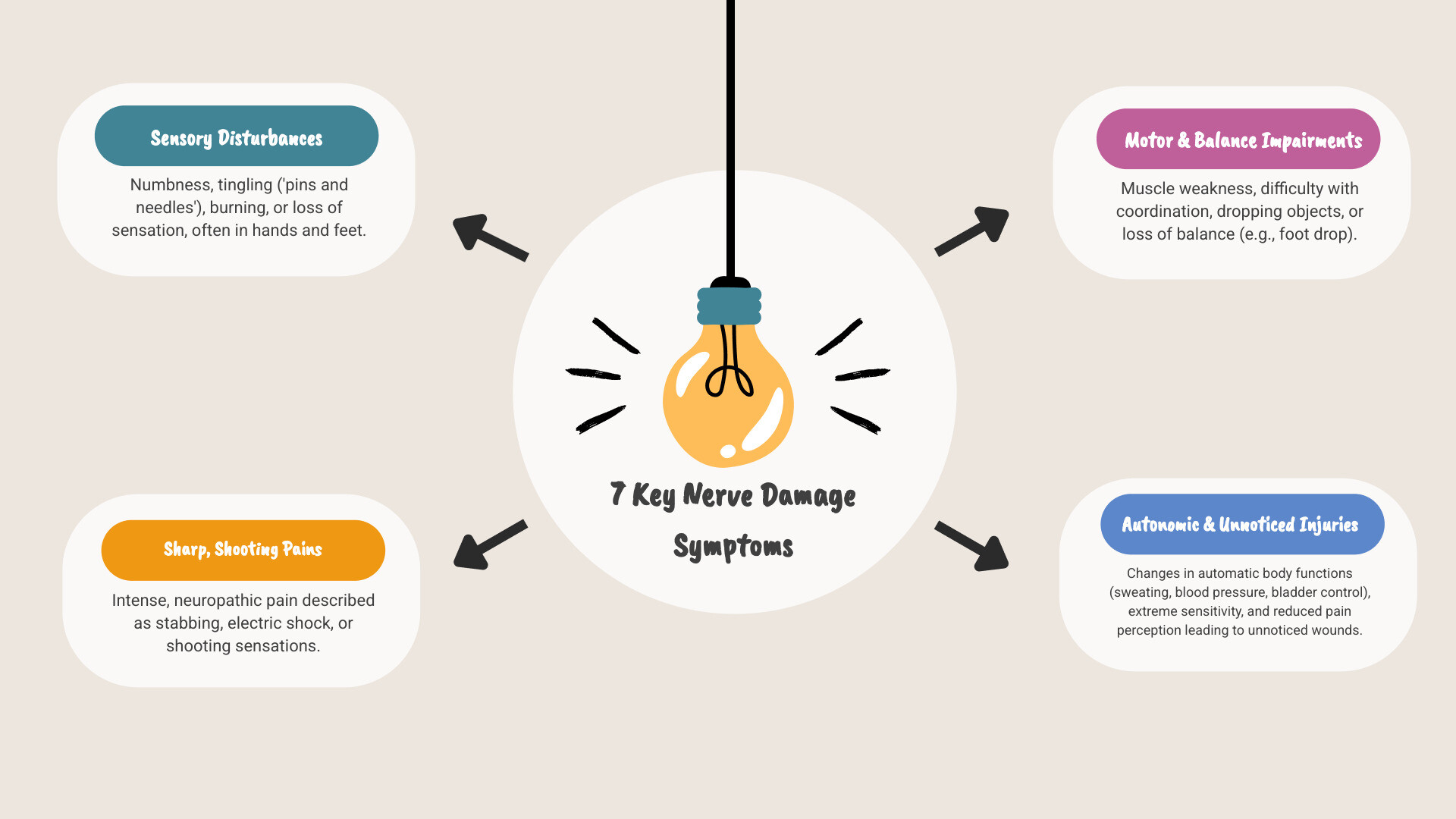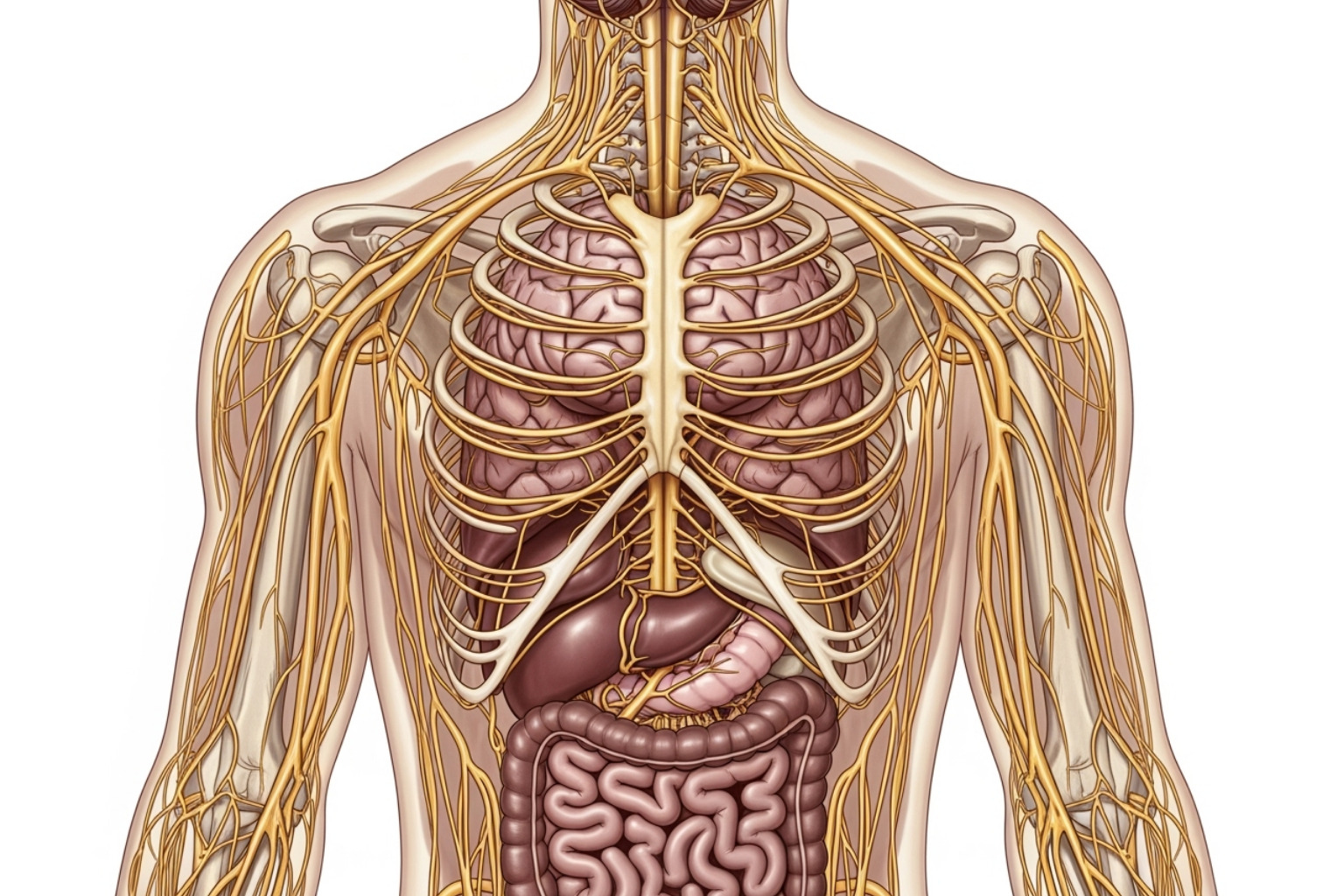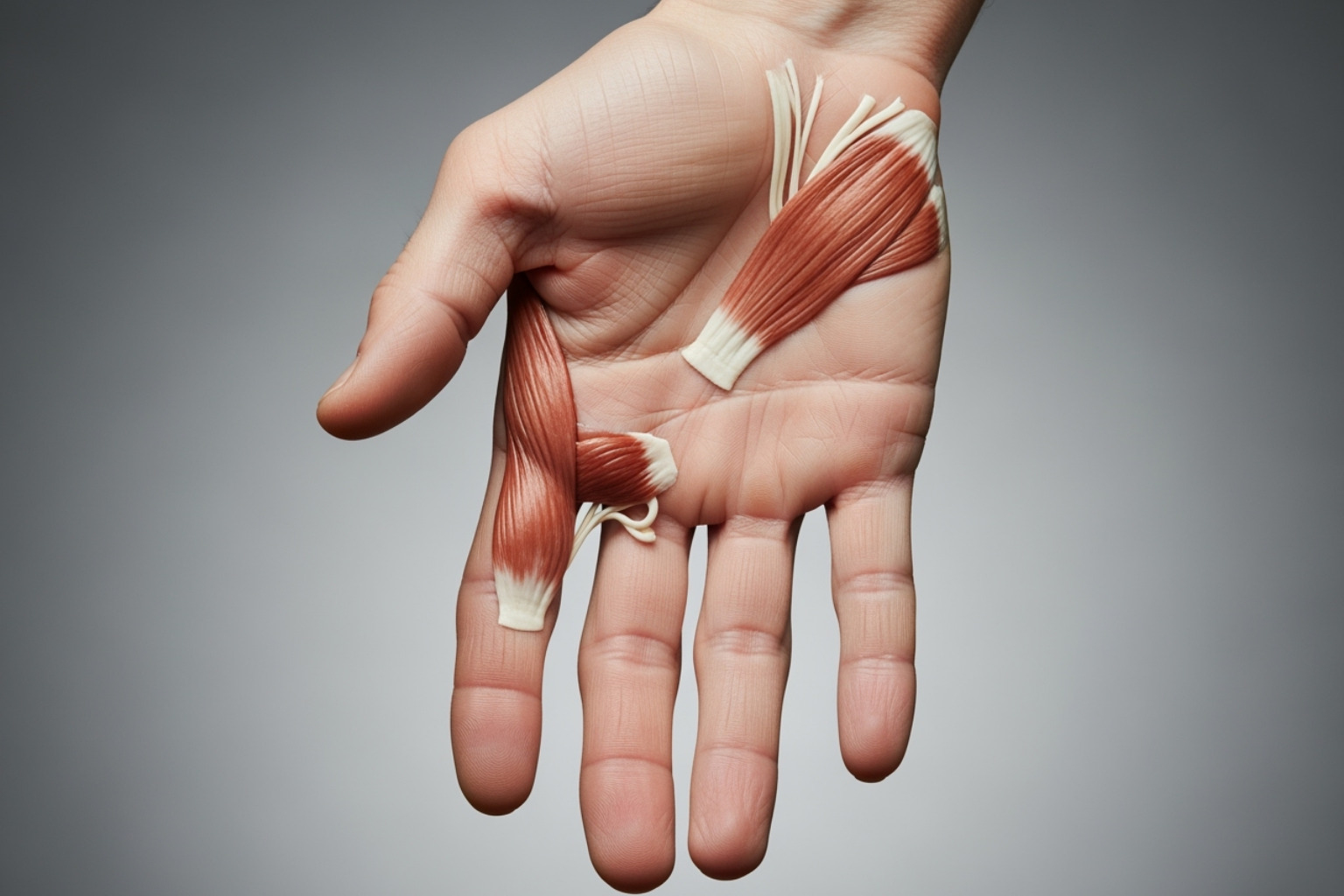Why Recognizing Nerve Damage Symptoms Early Can Change Everything
Nerve damage symptoms can appear in many ways, and recognizing them early is critical for effective treatment. Here are the most common signs to watch for:
Common Nerve Damage Symptoms:
- Numbness and tingling in hands or feet ("pins and needles")
- Burning, stabbing, or shooting pain
- Muscle weakness or poor grip
- Loss of balance and coordination
- Changes in sweating, blood pressure, or bladder control
- Extreme sensitivity to touch
- Unnoticed injuries like cuts or burns
Your nervous system is your body's command center. When nerves are damaged, these vital signals break down. The statistics are sobering: according to the National Institute of Neurological Disorders and Stroke, about 20 million Americans have peripheral nerve damage. Furthermore, the National Institute of Diabetes and Digestive and Kidney Diseases reports that up to 70% of people with diabetes will develop it at some point.
Here's what matters most: early recognition can make all the difference. The sooner you spot the warning signs, the better your chances of slowing progression and protecting your quality of life.
Whether you're an athlete, managing a chronic condition like diabetes, or just noticing unusual sensations, understanding these symptoms is the first step toward relief.
I'm Tony Enrico. At Neuropasil, we've helped thousands find relief from nerve pain. We are dedicated to helping you identify and manage nerve damage symptoms with effective, natural solutions to restore your comfort and quality of life.

Understanding Your Nerves and What Can Go Wrong
Think of your nervous system as a sophisticated messaging network. When we talk about nerve damage symptoms, we're talking about what happens when this network breaks down.

Your peripheral nervous system contains three types of nerves:
- Motor nerves carry commands from your brain to your muscles, allowing you to move. Damage can cause weakness or difficulty with coordination.
- Sensory nerves send information to your brain about what you feel, like heat, cold, or pain. Damage often results in tingling, numbness, or burning sensations.
- Autonomic nerves manage functions you don't consciously control, like heart rate, blood pressure, and digestion. Damage can lead to issues like unusual sweating or dizziness.
Common Causes of Nerve Damage
Many different things can disrupt this delicate system.
Diabetes is the most common cause in the U.S. Persistently high blood sugar gradually damages nerve fibers. According to the National Institute of Diabetes and Digestive and Kidney Diseases, up to 70% of people with diabetes experience some form of nerve damage. If this is part of your story, our guide on Diabetic Neuropathy Explained: Navigating Nerve Pain with Diabetes offers more insight.
Physical injury from accidents, falls, or surgery can stretch, compress, or sever nerves.
Autoimmune diseases like multiple sclerosis, lupus, or rheumatoid arthritis can cause your immune system to mistakenly attack nerve tissue.
Infections such as Lyme disease, shingles, or HIV can directly harm nerves or trigger an immune response that causes damage.
Vitamin deficiencies, especially in B vitamins (B1, B6, B12), vitamin E, or copper, can impair nerve function. Balance is key, as too much B6 can also be problematic.
Cancer and its treatment, including chemotherapy and radiation, can damage nerves. Tumors can also press on nerves, causing pain.
Other causes of nerve damage symptoms include chronic alcohol use, exposure to toxins, kidney disease, and certain medications. Sometimes, no clear cause can be found, which is known as idiopathic neuropathy. For more comprehensive information, Hopkins Medicine offers detailed resources.
The 7 Key Signs: A Breakdown of Nerve Damage Symptoms
When something is wrong with your nerves, your body sends signals. Learning to recognize these seven common nerve damage symptoms is the first step toward taking action.
1. The "Pins and Needles" Sensation (Sensory Symptoms)
When the temporary tingling of a limb "falling asleep" becomes a persistent feeling, it's a warning sign. You might experience numbness that feels like wearing an invisible glove or sock, tingling and prickling sensations, or a burning pain. Over time, this can progress to a loss of sensation, making it hard to feel textures or temperature changes. These symptoms often start in the toes and fingers. If this is your daily experience, learn more about Peripheral Neuropathy Symptoms.
2. Sharp, Stabbing, or Shock-Like Pains
This type of pain is sharp, sudden, and unpredictable. People describe it as shooting pain like lightning, electric shock sensations, or a persistent buzzing feeling. Neuropathic pain is challenging because it can flare up without an obvious trigger and often doesn't respond to traditional painkillers. This is the result of damaged nerves misfiring pain signals to the brain. For a deeper dive, see The Root of the Problem: Decoding Nerve Pain.
3. Muscle Weakness and Control Issues (Motor Symptoms)
When motor nerves are damaged, the connection between your brain and muscles weakens.

You might notice muscle weakness, making daily tasks like carrying groceries or climbing stairs difficult. A weakened grip can lead to dropping objects frequently. Fine motor skills, like buttoning a shirt, may become frustrating. Other signs include muscle twitching, cramps, and visible muscle wasting (muscle atrophy). A telling sign is foot drop, where difficulty lifting the front of your foot causes it to drag, increasing trip risk. In severe cases, this can lead to paralysis.
4. Loss of Balance and Coordination
Your brain relies on sensory feedback from your feet to maintain balance (proprioception). When nerve damage disrupts this, you may feel unsteady. This can lead to difficulty walking, frequent stumbling, or feeling unstable even when standing still. A key test: if your balance is significantly worse with your eyes closed, it strongly suggests sensory nerve damage. This loss of coordination increases your fall risk, which can lead to serious injuries.
5. Changes in Automatic Body Functions (Autonomic Symptoms)
Autonomic nerve damage affects the systems you don't consciously control. Symptoms can include excessive sweating or a lack of sweating, sudden blood pressure drops when standing (orthostatic hypotension) that cause dizziness, and digestive issues like constipation. Other signs are bladder dysfunction, sexual dysfunction, and dry eyes and mouth. For more on this, see the NIDDK's page on Autonomic Neuropathy.
6. Extreme Sensitivity to Touch (Allodynia)
Allodynia is when a normally non-painful stimulus, like the touch of bedsheets or a cool breeze, causes pain. Your nervous system misinterprets gentle contact as a painful event. This hypersensitivity can also apply to temperature changes, making everyday activities like showering or getting dressed incredibly difficult. Allodynia is a clear signal that your nervous system's processing has changed and requires medical evaluation.
7. Unnoticed Injuries and Sores
Sometimes, the most dangerous symptom is the absence of feeling. Losing the ability to feel pain means you lose your body's primary alarm system. You might not notice a cut, burn, or blister until it becomes infected. This is especially dangerous for the feet, where an unnoticed pressure sore can develop into a foot ulcer. For people with diabetes, these ulcers pose a serious health threat that can lead to amputation. Daily self-checks of your hands and feet are critical if you have sensory loss. What you can't feel, you must see.
How Doctors Diagnose and Classify Nerve Damage
Recognizing nerve damage symptoms is the first step, but a professional diagnosis is essential. A healthcare provider will use several methods to determine what's happening with your nerves.
The process starts with a physical and neurological examination. Your doctor will check your reflexes, muscle strength, balance, and your ability to sense light touch, vibration, and temperature. A detailed medical history helps identify potential underlying causes.
Your doctor may then recommend specific tests:
Nerve Conduction Study (NCS): This test uses small electrodes on the skin to measure how quickly electrical signals travel through your nerves. Slow or weak signals indicate a problem.
Electromyography (EMG): Often done with an NCS, this test uses a thin needle electrode to record electrical activity in your muscles. It helps show if muscles are responding correctly to nerve signals.
Nerve Biopsy: In some cases, a tiny sample of nerve tissue is removed for microscopic examination to determine the type and cause of damage.
Imaging Tests: An MRI or CT scan can reveal physical causes for your symptoms, such as a herniated disc or a tumor compressing a nerve.
Blood Work: Comprehensive blood tests can uncover underlying conditions like diabetes, vitamin deficiencies, autoimmune diseases, or thyroid problems.
Understanding Severity: The Sunderland Classification
To classify the severity of a peripheral nerve injury, doctors often use the Sunderland classification system, which has five degrees:
- First-degree: A temporary nerve block with no structural damage. Recovery is usually quick and complete.
- Second-degree: The inner nerve fiber (axon) is damaged, but the outer sheath is intact, guiding regeneration. A good recovery is expected over several months.
- Third-degree: The axon and its inner coverings are damaged. Recovery is unpredictable and often incomplete, sometimes requiring surgery.
- Fourth-degree: Severe damage where scar tissue blocks regeneration. Spontaneous recovery is unlikely, and surgery is typically needed.
- Fifth-degree: The nerve is completely severed. Surgical repair is required for any chance of recovery.
This system helps explain why some injuries heal well while others require more intensive treatment. For more on the diagnostic process, you can visit How Peripheral Neuropathy is Diagnosed.
Navigating Treatment and Management Options
When you're facing nerve damage symptoms, understanding your treatment options brings hope. The best approach is twofold: addressing the underlying cause and managing your current symptoms.
Getting to the Root of the Problem
Treating the source of the nerve damage can slow or even stop its progression. If diabetes is the cause, controlling blood sugar is essential. For a vitamin deficiency, targeted supplements can restore nerve function. If a medication is the culprit, your doctor may adjust it. In cases of nerve compression, physical therapy or surgery can relieve pressure and allow the nerve to heal.
Finding Relief from Nerve Pain
Nerve pain can be relentless, but there are tools to manage it.
Medications prescribed by your doctor, such as certain anticonvulsants or antidepressants, can help calm overactive nerve signals.
Physical therapy is a powerful tool for rebuilding strength, improving balance, and maintaining flexibility. A therapist can also use desensitization techniques for hypersensitivity.
Topical creams offer targeted relief. Our Neuropasil Nerve Pain Relief Cream provides fast-acting comfort right where you need it. The formula combines cooling menthol, soothing aloe, and moisturizing urea to calm irritated nerves and support skin health. Many of our customers find it an essential part of their daily routine. Learn more in The Complete Guide to Nerve Pain Relief Creams.
Lifestyle Changes That Actually Make a Difference
While not a cure, lifestyle adjustments are a daily investment in your nerve health.
- Eat a healthy diet rich in B vitamins and other nerve-supporting nutrients.
- Exercise regularly with low-impact activities like walking or swimming to improve circulation.
- Limit alcohol, as chronic use is a known cause of nerve damage.
- Manage your weight to reduce pressure on nerves.
- Quit smoking to improve circulation and overall nerve health.
- Perform daily foot checks if you have sensory loss to catch any injuries early.
If you're managing diabetic neuropathy, our guide on 7 Proven Diabetic Neuropathy Treatments offers additional strategies. Working with your healthcare team to find the right combination of treatments can transform your quality of life.
Frequently Asked Questions about Nerve Damage Symptoms
Navigating nerve damage brings up many questions. Here are clear, honest answers to some of the most common inquiries we hear about nerve damage symptoms.
What is the difference between neuralgia and neuropathic pain?
The terms are related but distinct. Think of it this way:
Neuralgia is a symptom—a specific type of pain that is sharp, stabbing, or burning along the path of a nerve.
Neuropathic pain is the broader condition. It refers to any pain caused by damage or disease affecting the nervous system.
In short, all neuralgia is a form of neuropathic pain, but not all neuropathic pain manifests as the sharp, specific pain of neuralgia. Neuropathic pain can also include tingling, numbness, or a deep ache.
Can nerve damage be reversed or cured?
The answer is nuanced: it depends on the cause of the damage and how quickly it's addressed.
If the damage stems from a reversible cause, like a vitamin deficiency or nerve compression caught early, recovery is possible. Correcting the deficiency or relieving the pressure can allow the nerve to heal, sometimes completely.
However, when nerve damage is severe, long-standing, or caused by a chronic condition like advanced diabetes, the damage may be permanent. In these cases, the focus shifts to managing symptoms and preventing further deterioration.
Early treatment is everything. The sooner you identify the cause and begin treatment, the better your chances of recovery. Even when a full reversal isn't possible, effective management can dramatically improve your quality of life.
What are the long-term effects of untreated nerve damage symptoms?
Ignoring nerve damage symptoms can lead to serious, escalating problems. The potential long-term consequences include:
Chronic Pain: What starts as mild discomfort can become relentless, debilitating pain that impacts sleep, mood, and daily function.
Permanent Loss of Sensation: This is dangerous, as it eliminates your body's warning system, leading to unnoticed injuries like cuts, burns, and infections.
Muscle Atrophy and Weakness: Damaged motor nerves cause muscles to waste away, leading to severe weakness that can impair basic tasks and mobility.
Disability and Impaired Mobility: Progressive balance problems and foot drop significantly increase fall risk and may eventually require the use of a cane, walker, or wheelchair.
Foot Ulcers and Amputation Risk: For those with sensory loss (especially from diabetes), an unnoticed sore can become an infected ulcer, potentially leading to amputation.
Autonomic Dysfunction: Untreated damage can cause chronic digestive problems, dangerous blood pressure fluctuations, bladder issues, and sexual dysfunction.
Reduced Quality of Life: The combination of pain, physical limitations, and fear often leads to depression, anxiety, and social isolation.
This is why early recognition and proactive management are so critical. Protecting your nerves means protecting your future independence and well-being.
Conclusion
Nerve damage symptoms are your body's urgent message that your nerves need attention. We've covered the seven key warning signs: sensory changes like "pins and needles," sharp pains, muscle weakness, balance issues, autonomic dysfunction, extreme sensitivity, and the dangerous inability to feel injuries. Understanding these signs is the first step to getting help.
We've also explored the causes of nerve damage and how doctors diagnose it. This knowledge empowers you to turn vague discomfort into an identifiable issue that can be addressed.
Here's the most important takeaway: early recognition changes everything. The sooner you seek a medical evaluation, the better your chances of slowing progression and protecting your independence. Don't wait for symptoms to become unbearable.
Managing nerve damage requires a comprehensive approach, including medical treatment, physical therapy, and lifestyle changes. At Neuropasil, we understand that daily relief is also crucial. Our natural, fast-acting topical cream provides targeted comfort right where you need it, helping you manage pain and reclaim your mobility.
Listen to your body, seek the guidance you need, and know that effective relief is available.
Explore natural, fast-acting relief for nerve pain
References
This article cites data and information from the following reputable medical and health institutions to ensure all factual claims are backed by credible, linked sources.
National Institute of Neurological Disorders and Stroke (NINDS): Source for the statistic that an estimated 20 million people in the U.S. have peripheral neuropathy. Peripheral Neuropathy.
National Institute of Diabetes and Digestive and Kidney Diseases (NIDDK): Source for the statistic that up to 70% of people with diabetes have some form of neuropathy, and for information on autonomic neuropathy. Nerve Damage (Diabetic Neuropathies) and Autonomic Neuropathy.
Johns Hopkins Medicine: Referenced for information on the causes of nerve damage and the Sunderland classification system. Peripheral Nerve Injury.
NYU Langone Health: Referenced for information on the diagnostic process for peripheral neuropathy. How Peripheral Neuropathy is Diagnosed.
Cleveland Clinic: General resource for patient education on peripheral neuropathy symptoms and treatments. Peripheral Neuropathy.
WebMD: General resource for information on nerve pain causes and symptoms. Nerve Pain and Nerve Damage.














